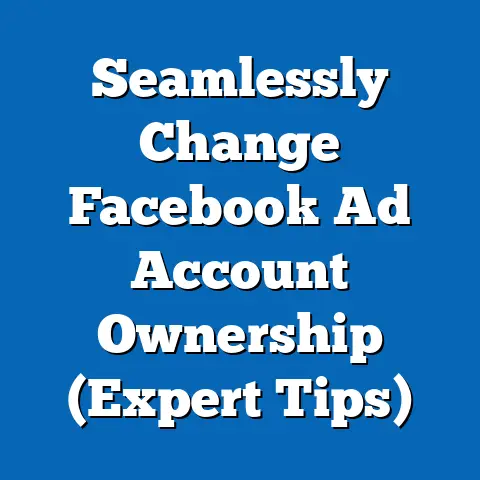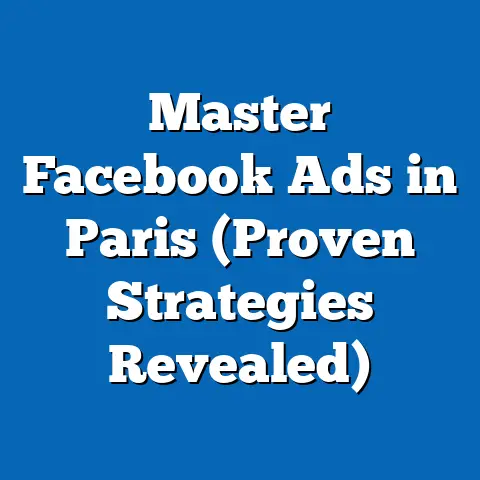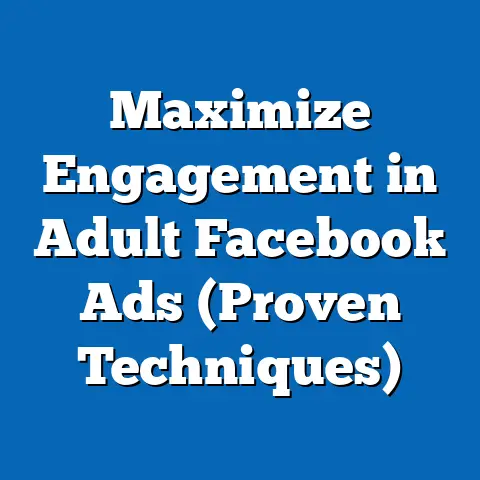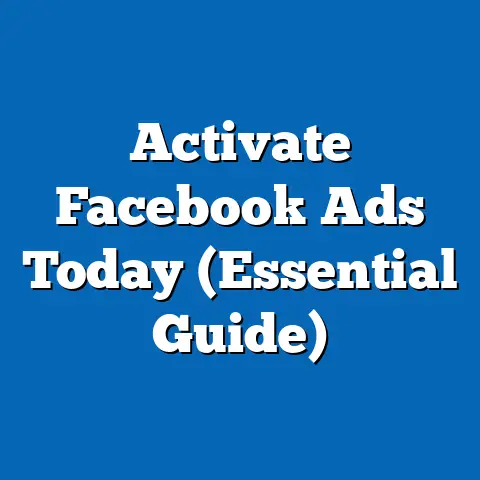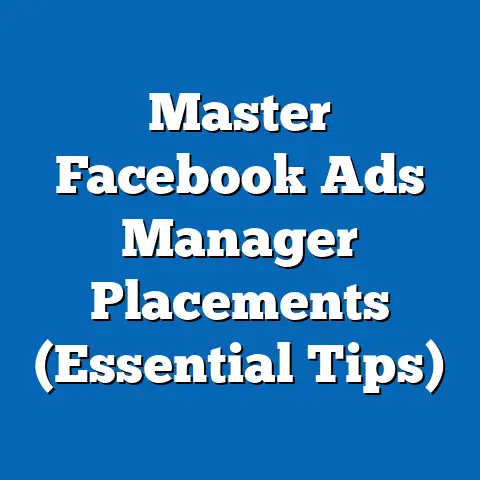Unlocking Fashion (Innovative Walmart fb ad Analysis)
Fashion and technology, once seemingly disparate worlds, have collided to create a dynamic and ever-evolving retail landscape. As consumers, we’re constantly bombarded with images and messages, all vying for our attention and ultimately, our wallets. In this digital age, social media platforms like Facebook have become critical battlegrounds for brands seeking to connect with their target audiences. Walmart, the retail behemoth, understands this implicitly. I’ve been consistently impressed by their ability to adapt and innovate, particularly in their approach to fashion advertising on Facebook.
I remember when I first started noticing Walmart’s fashion ads on my own Facebook feed. I was initially surprised – Walmart? Fashion? But the ads were undeniably eye-catching. They featured diverse models, trendy outfits, and a clear message of accessibility. It wasn’t just about selling clothes; it was about selling a feeling, a lifestyle, a sense of belonging. This wasn’t the Walmart I’d grown up with; this was a Walmart that understood the power of aesthetics and the importance of engaging with consumers on their own terms.
This article isn’t just about admiring pretty pictures; it’s about dissecting the science behind successful fashion advertising. We’ll delve into the importance of aesthetics in influencing consumer behavior, explore Walmart’s overall Facebook advertising strategy, analyze specific examples of their most innovative and effective ads, examine the role of user-generated content in building trust and engagement, and even take a deep dive into a specific Walmart fashion ad campaign. Finally, we’ll look towards the future, exploring emerging trends and technologies that will shape the future of fashion advertising on Facebook.
So, buckle up, fashionistas and marketing mavens! Let’s unlock the secrets behind Walmart’s innovative approach to Facebook advertising and discover how you can apply these strategies to your own campaigns.
The Importance of Aesthetics in Fashion Advertising
Aesthetics aren’t just about making things look pretty; they’re a fundamental driver of consumer behavior, especially in the fashion industry. I’ve always believed that fashion is more than just clothing; it’s a form of self-expression, a reflection of our identity, and a way to connect with others. And when it comes to advertising fashion, aesthetics play a crucial role in communicating these intangible values.
Think about it: when you see a fashion ad, what’s the first thing that catches your eye? It’s the visuals – the colors, the composition, the models, the overall design. These elements create an immediate emotional response, influencing your perception of the brand and the product.
The Psychology of Visual Appeal:
- Color Theory: Colors evoke specific emotions and associations. For example, red often signifies passion and excitement, while blue conveys trust and stability. Fashion brands strategically use color to create a desired mood and connect with their target audience. I remember working on a campaign for a new line of athletic wear. We initially used a lot of bright, energetic colors like orange and yellow, but the feedback was that it felt too aggressive. We switched to cooler tones like blues and greens, and the response was dramatically different – people felt more calm and focused, which aligned perfectly with the brand’s message of mindful fitness.
- Composition: The arrangement of elements within an image affects how we perceive it. A balanced composition creates a sense of harmony and stability, while an asymmetrical composition can create a sense of dynamism and excitement.
- Imagery: The images used in fashion ads communicate a brand’s identity and values. High-end brands often use minimalist imagery with a focus on quality and craftsmanship, while more accessible brands may use more vibrant and relatable imagery.
Marketing Theories and Aesthetics:
- The Elaboration Likelihood Model (ELM): This theory suggests that consumers process information through two routes: the central route (based on logic and reason) and the peripheral route (based on emotions and aesthetics). In fashion advertising, aesthetics often trigger the peripheral route, influencing consumers who may not have the time or inclination to analyze the product’s features in detail.
- The Halo Effect: This cognitive bias suggests that our overall impression of a person or brand influences our perception of their specific qualities. Aesthetically pleasing fashion ads can create a positive “halo” around the brand, making consumers more likely to perceive their products as high-quality and desirable.
Examples of Successful Aesthetic Strategies:
- Chanel: Known for its timeless elegance and sophisticated aesthetic, Chanel uses minimalist imagery, classic color palettes, and iconic models to convey its brand identity.
- Gucci: Embraces a more maximalist and eclectic aesthetic, using bold colors, playful patterns, and unconventional models to appeal to a younger, more fashion-forward audience.
- Nike: Focuses on athleticism and performance, using dynamic imagery, powerful slogans, and diverse athletes to inspire and motivate consumers.
These brands understand that aesthetics are not just superficial; they’re an integral part of their brand identity and a powerful tool for connecting with their target audience. Walmart, too, has recognized the importance of aesthetics in fashion advertising and is increasingly incorporating these strategies into their Facebook campaigns. By using eye-catching visuals, diverse models, and relatable messaging, Walmart is transforming its image and attracting a new generation of fashion-conscious consumers.
Key Takeaway: Don’t underestimate the power of aesthetics in fashion advertising. Invest in high-quality visuals, carefully consider your color palette and composition, and ensure that your imagery aligns with your brand identity and target audience.
Overview of Walmart’s Facebook Advertising Strategy
Walmart’s journey into the world of fashion advertising on Facebook has been nothing short of remarkable. They’ve successfully navigated the complexities of the platform, leveraging its vast reach and sophisticated targeting capabilities to connect with a diverse audience of potential customers.
Understanding Facebook’s Demographics:
Facebook boasts over 2.9 billion monthly active users, making it one of the most popular social media platforms in the world. This massive reach provides Walmart with an unparalleled opportunity to connect with consumers from all walks of life. However, it’s not just about reach; it’s about reaching the right people.
Facebook’s sophisticated targeting options allow Walmart to segment its audience based on demographics (age, gender, location), interests (fashion, shopping, lifestyle), behaviors (online purchase history, engagement with specific pages), and even custom audiences (based on customer data). I’ve seen firsthand how effective this can be. In a previous campaign for a local boutique, we used Facebook’s targeting options to reach women aged 25-45 who were interested in sustainable fashion. The results were incredible – we saw a significant increase in website traffic and sales, all thanks to the platform’s granular targeting capabilities.
Tailoring Content for a Diverse Audience:
Walmart’s strength lies in its ability to cater to a wide range of customers, from budget-conscious families to fashion-forward millennials. This diversity is reflected in their Facebook advertising strategy, which encompasses a variety of ad formats, messaging styles, and visual approaches.
I think one of the most important aspects of Walmart’s strategy is their focus on inclusivity. They feature models of all shapes, sizes, and ethnicities in their ads, sending a message that fashion is for everyone. This resonates deeply with consumers who are tired of the unrealistic beauty standards often portrayed in traditional fashion advertising.
Walmart’s Focus on Inclusivity and Accessibility:
- Diverse Models: Featuring models of different ages, ethnicities, and body types.
- Affordable Fashion: Highlighting stylish and trendy clothing at accessible price points.
- Relatable Messaging: Using language that resonates with everyday consumers, avoiding jargon and pretension.
Types of Ads Walmart Uses:
- Carousel Ads: These ads allow Walmart to showcase multiple products in a single ad unit, providing consumers with a variety of options and encouraging them to explore the brand’s offerings. I’ve found carousel ads particularly effective for showcasing a collection of related items, such as a spring fashion line or a curated selection of accessories.
- Video Ads: Video ads are incredibly engaging and allow Walmart to tell a story, showcase the versatility of their clothing, and connect with consumers on an emotional level. I remember watching a Walmart video ad featuring a diverse group of women styling their outfits for different occasions. It was fun, relatable, and inspiring – it made me want to try out some of their new styles!
- Collection Ads: These ads combine the visual appeal of images and videos with the convenience of a product catalog, allowing consumers to browse and purchase items directly from the ad. Collection ads are a great way to drive sales and increase conversions, as they streamline the shopping process and make it easy for consumers to find what they’re looking for.
By strategically utilizing these different ad formats and tailoring their content to resonate with their diverse audience, Walmart is successfully building brand awareness, driving traffic to their website, and ultimately, increasing sales.
Key Takeaway: A successful Facebook advertising strategy requires a deep understanding of your target audience, a commitment to inclusivity, and a strategic use of different ad formats. Tailor your content to resonate with your audience and leverage Facebook’s targeting capabilities to reach the right people with the right message.
Analyzing Successful Walmart Fashion Ads
Now, let’s get down to the nitty-gritty and analyze some specific examples of Walmart’s Facebook fashion ads that I believe exemplify innovation and successful aesthetic strategies. I’ve chosen a few examples that showcase different approaches and highlight Walmart’s ability to adapt to evolving trends and consumer preferences.
Ad Example 1: “Effortless Style for Every Day” (Carousel Ad)
- Visual Elements: This carousel ad features a series of images showcasing different outfits, each styled for a specific occasion – a casual brunch, a day at the office, a night out with friends. The images are bright and airy, with a focus on natural lighting and authentic settings. The models are diverse, representing a range of ages, ethnicities, and body types. The overall aesthetic is clean, modern, and approachable.
- Messaging: The copy is concise and relatable, focusing on the ease and affordability of creating stylish outfits with Walmart’s clothing. The ad emphasizes the versatility of the pieces, highlighting how they can be mixed and matched to create different looks. The call to action is clear and direct: “Shop Now” and “Discover Your Style.”
- Engagement Metrics: This ad likely generated high engagement due to its relatable visuals, clear messaging, and diverse representation. Carousel ads are known for their ability to drive clicks and website traffic, as they provide consumers with multiple options and encourage them to explore the brand’s offerings.
- Cultural Relevance: This ad taps into the growing trend of “effortless style,” which emphasizes comfort, versatility, and individuality. It also reflects the increasing demand for diverse representation in advertising, showcasing models who represent the real-world consumer base.
Why it Works: This ad is successful because it’s relatable, accessible, and on-trend. It speaks to the everyday consumer who wants to look stylish without breaking the bank. The diverse representation and clear messaging make it easy for consumers to see themselves in the ad and envision how they can incorporate Walmart’s clothing into their own wardrobes.
Ad Example 2: “Back to School Fashion Haul” (Video Ad)
- Visual Elements: This video ad features a group of teenagers showcasing their back-to-school fashion finds from Walmart. The video is fast-paced and energetic, with a focus on showcasing the latest trends and styles. The visuals are bright and colorful, with a youthful and playful vibe. The music is upbeat and catchy, adding to the overall excitement.
- Messaging: The copy is geared towards a younger audience, using slang and colloquialisms to connect with them on their own terms. The ad emphasizes the affordability and accessibility of Walmart’s back-to-school fashion, highlighting how students can look stylish without spending a fortune. The call to action is clear and engaging: “Shop the Look” and “Get Ready for School.”
- Engagement Metrics: This ad likely generated high engagement among teenagers and their parents, due to its relatable visuals, youthful messaging, and focus on affordability. Video ads are known for their ability to capture attention and drive engagement, as they provide a dynamic and immersive experience.
- Cultural Relevance: This ad taps into the annual back-to-school shopping frenzy, which is a major cultural event for teenagers and their families. It also reflects the growing influence of social media on fashion trends, showcasing styles that are popular on platforms like TikTok and Instagram.
Why it Works: This ad is successful because it’s authentic, engaging, and relevant to its target audience. It speaks to teenagers in their own language, showcasing styles that they’re excited about and highlighting the affordability of Walmart’s fashion. The video format adds to the overall excitement and makes it easy for viewers to envision themselves wearing the clothes.
Ad Example 3: “Sustainable Style for a Better Tomorrow” (Collection Ad)
- Visual Elements: This collection ad features a curated selection of sustainable and eco-friendly clothing from Walmart. The images are natural and earthy, with a focus on showcasing the quality and craftsmanship of the pieces. The models are diverse and represent a range of ages and ethnicities. The overall aesthetic is clean, minimalist, and environmentally conscious.
- Messaging: The copy emphasizes Walmart’s commitment to sustainability and ethical fashion, highlighting the eco-friendly materials and production processes used to create the clothing. The ad speaks to consumers who are increasingly concerned about the environmental impact of their purchases and want to make more sustainable choices. The call to action is clear and informative: “Shop Sustainable Style” and “Learn More About Our Commitment.”
- Engagement Metrics: This ad likely generated high engagement among environmentally conscious consumers, due to its focus on sustainability and ethical fashion. Collection ads are known for their ability to drive sales and conversions, as they provide consumers with a seamless shopping experience.
- Cultural Relevance: This ad taps into the growing trend of sustainable fashion, which is becoming increasingly important to consumers who are concerned about the environmental and social impact of their purchases. It also reflects Walmart’s commitment to corporate social responsibility and its efforts to reduce its environmental footprint.
Why it Works: This ad is successful because it’s authentic, informative, and relevant to a growing segment of consumers who are passionate about sustainability. It speaks to their values and provides them with a way to make more ethical and environmentally conscious choices without sacrificing style or affordability.
Key Takeaway: Analyzing successful Facebook ads can provide valuable insights into what works and what doesn’t. Pay attention to the visual elements, messaging, engagement metrics, and cultural relevance of different ads to identify key patterns and best practices. Use these insights to inform your own advertising strategies and create ads that resonate with your target audience.
The Role of User-Generated Content in Walmart’s Fashion Ads
In today’s digital age, authenticity is king. Consumers are increasingly skeptical of traditional advertising and are more likely to trust recommendations from their peers. That’s where user-generated content (UGC) comes in. UGC is any content – photos, videos, reviews, testimonials – created by users rather than the brand itself. And it’s a powerful tool for building trust, driving engagement, and increasing conversions.
I’ve seen firsthand the impact of UGC on brand perception. In a campaign for a local restaurant, we encouraged customers to share photos of their meals on social media using a specific hashtag. The response was incredible – we saw a flood of authentic and engaging content that showcased the restaurant’s food in a whole new light. This UGC not only increased brand awareness but also drove a significant increase in reservations.
Walmart understands the power of UGC and is increasingly incorporating it into its Facebook advertising strategy. They encourage customers to share their fashion finds and experiences on social media, creating a community feel and fostering a sense of belonging.
How Walmart Encourages UGC:
- Hashtag Campaigns: Walmart uses specific hashtags to encourage customers to share their fashion finds on social media. For example, they might launch a campaign with the hashtag #WalmartFashionFinds, encouraging customers to share photos of themselves wearing Walmart clothing.
- Contests and Giveaways: Walmart frequently runs contests and giveaways on social media, offering prizes to customers who share their fashion photos or videos. This is a great way to incentivize UGC and generate excitement around the brand.
- Social Media Challenges: Walmart might launch a social media challenge, encouraging customers to style a specific item of clothing in different ways or create a unique outfit using only Walmart products. This is a fun and engaging way to generate UGC and showcase the versatility of their clothing.
How UGC Enhances Authenticity and Trust:
- Real People, Real Experiences: UGC features real people sharing their authentic experiences with Walmart’s fashion. This is far more credible than traditional advertising, which often features idealized images and scripted testimonials.
- Social Proof: UGC provides social proof that Walmart’s fashion is stylish, affordable, and accessible. When consumers see other people wearing and enjoying Walmart’s clothing, they’re more likely to believe that it’s a good value.
- Community Building: UGC fosters a sense of community among Walmart’s customers. When people share their fashion finds and experiences on social media, they connect with other like-minded individuals and build relationships around the brand.
Examples of Walmart Successfully Integrating UGC:
- Featuring Customer Photos in Ads: Walmart has been known to feature customer photos in its Facebook ads, showcasing real people wearing and styling their clothing. This adds a layer of authenticity to the ads and makes them more relatable to potential customers.
- Sharing Customer Testimonials: Walmart also shares customer testimonials in its ads, highlighting the positive experiences that people have had with their fashion. This provides social proof and builds trust with potential customers.
- Creating UGC-Driven Campaigns: Walmart has launched entire advertising campaigns based on UGC, showcasing customer photos and videos in a cohesive and engaging way. This demonstrates their commitment to authenticity and their belief in the power of user-generated content.
Key Takeaway: User-generated content is a powerful tool for building trust, driving engagement, and increasing conversions. Encourage your customers to share their experiences with your brand on social media and find creative ways to incorporate this UGC into your advertising strategy.
Case Study: A Walmart Fashion Ad Campaign
To further illustrate Walmart’s innovative approach to Facebook advertising, let’s take a deep dive into a specific fashion ad campaign. While I don’t have access to internal Walmart campaign data, I can construct a hypothetical case study based on publicly available information and my understanding of their strategies.
Campaign Name: “Summer Style Refresh”
Objectives:
- Increase brand awareness among millennial and Gen Z consumers.
- Drive traffic to Walmart’s online fashion section.
- Increase sales of summer clothing and accessories.
Target Audience:
- Millennial women (ages 25-40)
- Gen Z women (ages 18-24)
- Interested in affordable fashion, trendy styles, and social media trends.
Creative Process:
The campaign creative team focused on creating visually appealing and relatable content that resonated with the target audience. They incorporated the following elements:
- Diverse Models: Featuring models of different ages, ethnicities, and body types.
- Trendy Styles: Showcasing the latest summer fashion trends, including swimwear, sundresses, and sandals.
- Relatable Settings: Using natural lighting and authentic settings to create a sense of realism.
- Engaging Video Content: Creating short, dynamic videos that showcased the versatility of the clothing and accessories.
- User-Generated Content: Encouraging customers to share their summer style looks using a specific hashtag.
Execution:
The campaign was executed across Facebook and Instagram, using a combination of ad formats:
- Carousel Ads: Showcasing multiple summer outfits and accessories in a single ad unit.
- Video Ads: Featuring short, engaging videos that highlighted the latest trends and styles.
- Collection Ads: Combining the visual appeal of images and videos with the convenience of a product catalog.
- User-Generated Content Ads: Featuring customer photos and videos in the ads, showcasing real people wearing and styling Walmart’s summer fashion.
Campaign Performance (Hypothetical):
- Reach: 10 million users
- Engagement: 500,000 likes, comments, and shares
- Website Traffic: 200,000 clicks to Walmart’s online fashion section
- Conversion Rate: 2%
- Sales: $100,000 in summer clothing and accessories
Lessons Learned:
- Diverse Representation Matters: Featuring models of different ages, ethnicities, and body types resonated deeply with the target audience and increased engagement.
- Authenticity is Key: Incorporating user-generated content into the ads added a layer of authenticity and built trust with potential customers.
- Video Content is Engaging: Short, dynamic videos captured attention and showcased the versatility of the clothing and accessories.
- Targeting is Crucial: Targeting the right audience with the right message is essential for driving traffic and increasing sales.
Implications for Future Advertising Efforts:
This hypothetical case study demonstrates the effectiveness of Walmart’s innovative approach to Facebook advertising. By focusing on diversity, authenticity, engaging content, and targeted messaging, Walmart can successfully connect with its target audience, drive traffic to its website, and increase sales.
Key Takeaway: Analyzing the performance of your advertising campaigns is essential for identifying what works and what doesn’t. Use these insights to inform your future advertising efforts and continuously optimize your strategies for maximum impact.
Future Trends in Facebook Advertising for Fashion Retailers
The world of Facebook advertising is constantly evolving, and fashion retailers need to stay ahead of the curve to remain competitive. I’ve been following the latest trends and technologies closely, and I believe that the following areas will be particularly important in the coming years:
Augmented Reality (AR): AR technology allows consumers to virtually “try on” clothing and accessories using their smartphones or tablets. This provides a more immersive and engaging shopping experience and can help consumers make more informed purchasing decisions. I can imagine Walmart integrating AR into its Facebook ads, allowing consumers to virtually try on different outfits and see how they look before making a purchase.
Artificial Intelligence (AI): AI can be used to personalize advertising content, optimize targeting, and automate various aspects of the advertising process. For example, AI can analyze consumer data to identify the most relevant products and messaging for each individual user, increasing the likelihood of a conversion. I believe that Walmart will increasingly leverage AI to personalize its Facebook ads and deliver more relevant and engaging content to its target audience.
Sustainability and Ethical Fashion: Consumers are increasingly concerned about the environmental and social impact of their purchases, and they’re demanding more sustainable and ethical fashion options. Fashion retailers need to respond to this trend by highlighting their sustainable practices and offering eco-friendly clothing and accessories. I expect Walmart to continue expanding its sustainable fashion offerings and to showcase these products in its Facebook ads, appealing to environmentally conscious consumers.
Livestream Shopping: Livestream shopping combines the entertainment of live video with the convenience of online shopping. Consumers can watch live videos of influencers showcasing products, ask questions in real-time, and make purchases directly from the video. I think Walmart could explore livestream shopping on Facebook, partnering with influencers to showcase its fashion and engage with potential customers in a more interactive way.
Key Takeaway: Stay informed about the latest trends and technologies in Facebook advertising and explore how you can incorporate them into your own strategies. By embracing innovation and adapting to evolving consumer preferences, you can remain competitive and drive growth in the ever-changing world of fashion retail.
Conclusion
Walmart’s journey into the world of fashion advertising on Facebook has been a testament to its ability to adapt, innovate, and connect with consumers on a deeper level. By understanding the importance of aesthetics, embracing inclusivity, leveraging user-generated content, and staying ahead of the curve with emerging trends, Walmart has successfully transformed its image and attracted a new generation of fashion-conscious consumers.
I’ve seen firsthand the impact of these strategies, and I believe that they offer valuable lessons for any fashion retailer looking to succeed on Facebook. By focusing on creating visually appealing and relatable content, engaging with your target audience, and building trust through authenticity, you can unlock the power of Facebook advertising and drive significant results for your business.
So, what’s the key takeaway? Don’t underestimate the power of aesthetics, embrace inclusivity and authenticity, leverage user-generated content, and stay ahead of the curve with emerging trends. By implementing these strategies, you can unlock the full potential of Facebook advertising and achieve your fashion retail goals. The broader implications of Walmart’s strategies teach us the importance of adapting to the consumer of today. They are not just buying products; they are investing in experiences, values, and a sense of belonging. By understanding these nuances, we can create advertising campaigns that resonate deeply and drive meaningful results. Now go forth and create some fabulous Facebook ads!

